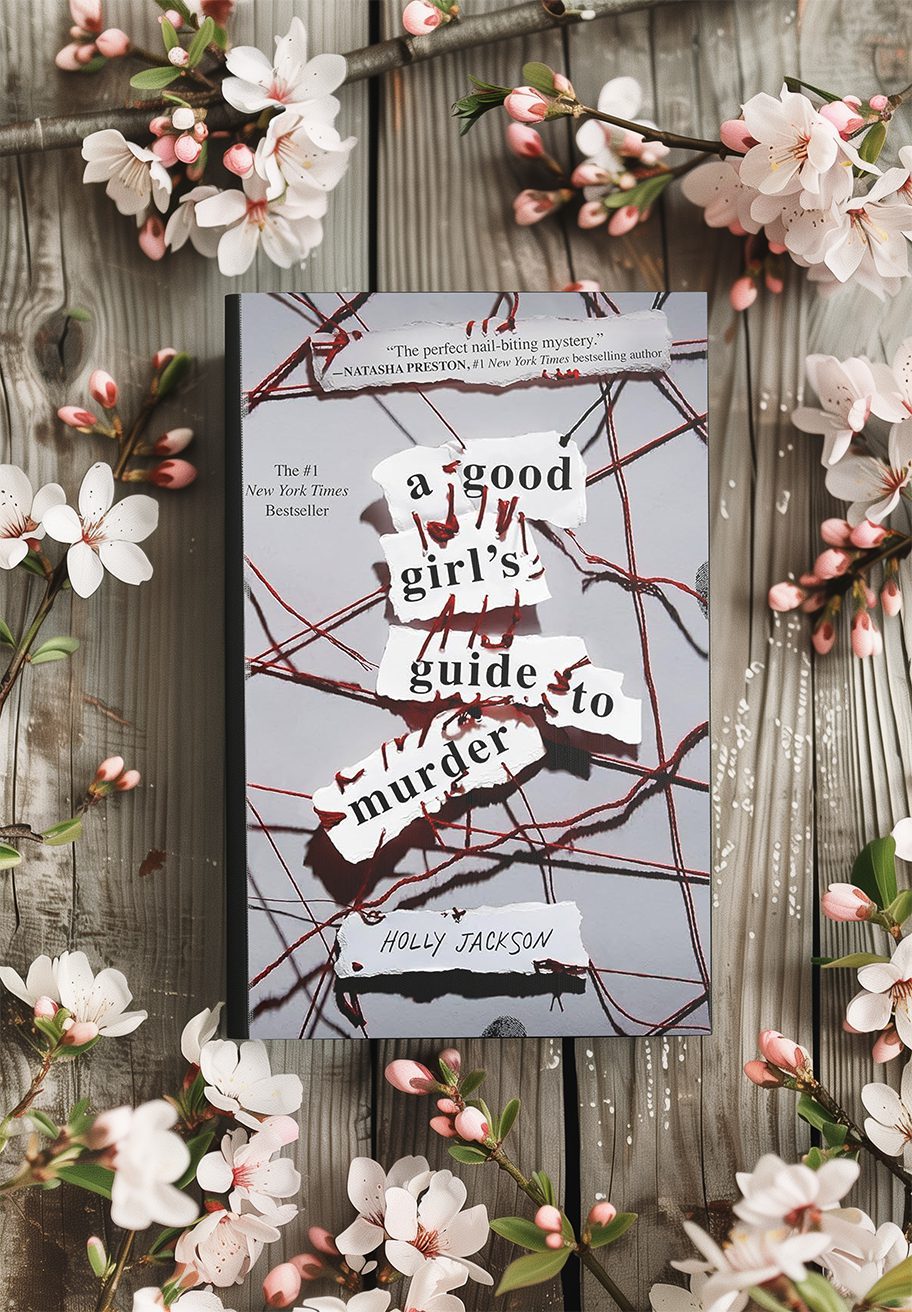In this bonus podcast episode, we explore the newest Netflix adaptation: A Good Girl’s Guide to Murder.
The story follows the story of Pippa (Pip) Fitz-Amobi, a high school student in small-town England (notably, the book is set in the US, while the show shifts the setting to England). Pip decides to investigate a five-year-old murder case for her final school project, which doubles as a university admissions essay. The case involves the disappearance of Andy Bell and the subsequent suicide of her boyfriend, Sal Singh, who was accused of her murder.
Note
The following is an editorialized transcript of our weekly literary podcast. If you would like to listen to the podcast, click the play button above orlisten on your favorite platform with the links below.
Key Characters

- Becca: Andy’s sister, who plays a crucial role in the story’s resolution.
- Pippa (Pip) Fitz-Amobi: The protagonist, is a 17-year-old student with a penchant for solving mysteries.
- Ravi Singh: Sal’s brother, who helps Pip with her investigation.
- Andy Bell: The girl who disappeared five years ago.
- Sal Singh: Andy’s boyfriend, accused of her murder.
- Naomi and Cara Ward: Sisters and friends of Pip.
- Elliot Ward: Naomi and Cara’s father, a teacher and mentor to Pip.
- Max Hastings: A wealthy, troublesome character from Sal and Naomi’s friend group.
- Daniel Da Silva: A young police officer involved in the original investigation.
Related10 Best Books For Your Bookclub In 2024
Plot Overview

As Pip delves deeper into the case, she uncovers various layers of deception and hidden truths. The investigation leads her to question the town’s perception of Andy as a perfect, angelic figure, revealing her involvement in drug dealing and complicated relationships. Pip’s search for the truth brings her closer to Ravi Singh, and together they navigate through a web of suspects and clues.
Key Differences Between the Book and TV Show

The adaptation of A Good Girl’s Guide to Murder from page to screen brought about several notable changes. Perhaps the most significant alteration is the shift in setting. While the book takes place in the United States, the TV show transposes the story to England, bringing a different cultural backdrop to the narrative. This location change likely influences the portrayal of law enforcement, school dynamics, and social interactions throughout the series.
Another crucial difference lies in the characterization of Andy Bell. In the novel, Andy is presented as a more morally ambiguous figure, engaged in relationships with multiple men while still dating Sal. This complexity is somewhat simplified in the TV adaptation, potentially to create a more sympathetic victim or to streamline the narrative for television audiences.
The Elliot Ward storyline also undergoes a significant transformation from book to screen. The show opts for a more straightforward portrayal of Elliot’s involvement with the girl he mistakenly believes to be Andy. In contrast, the book delves deeper into the psychological aspects of this scenario, presenting a more intricate and disturbing picture of Elliot’s mental state and actions.
Pacing and level of detail emerge as another point of divergence between the two mediums. The podcast hosts note that while the book maintains a brisk pace with intricate details and subplots that keep readers engaged, the TV show occasionally drags, despite having ample time across its six episodes to explore the story’s complexities. This difference in pacing may impact the overall viewing experience compared to reading the novel.
Lastly, the fate of Becca, Andy’s sister, is handled differently in each version. The book provides a clear resolution by depicting Becca’s arrest for her actions, offering a sense of justice and closure. The TV show, however, leaves Becca’s fate more ambiguous, potentially setting up future plot developments or leaving viewers to contemplate the moral implications of her actions without a definitive legal conclusion.
Themes and Social Commentary

A Good Girl’s Guide to Murder explores various themes and social issues, providing commentary on several aspects of contemporary society. One of the central themes is the fallibility of public perception and the dangers of idolizing individuals. Through the character of Andy Bell, initially viewed as a perfect, angelic figure by the town, the story demonstrates how surface-level judgments can obscure complex realities, encouraging readers and viewers to look beyond appearances.
The narrative also tackles the issue of racial prejudice, particularly through its portrayal of the Singh family’s treatment by the town following Sal’s alleged involvement in Andy’s disappearance. This aspect of the story highlights the persistent challenges faced by minority communities in predominantly white, small-town settings, and how quickly public opinion can turn against them in times of crisis.
The role of social media and technology in modern investigations is another key theme explored in both the book and TV adaptation. Pip’s use of various technological tools to conduct her investigation reflects the changing landscape of crime-solving and the power of information in the digital age. This element adds a contemporary feel to the classic mystery genre and raises questions about privacy, digital footprints, and the democratization of investigative techniques.
Related10 Most Disappointing Book-To-Movie Adaptations In The Last 10 Years
The complexities of teenage relationships and the pressures faced by young people form a significant part of the story’s backdrop. Through its diverse cast of young characters, the narrative delves into issues such as academic pressure, social expectations, and the challenges of navigating romantic relationships during adolescence. This focus allows the story to resonate deeply with its young adult audience while also providing insight for older readers into the modern teenage experience.
Lastly, the long-lasting effects of trauma on individuals and communities emerge as a poignant theme throughout the narrative. The story explores how a single tragic event can ripple through a community for years, affecting not only those directly involved but also shaping the lives of younger generations. This theme adds depth to the mystery plot, grounding it in the real-world consequences of violence and loss.
Critical Analysis

The hosts praise the book for its page-turning quality and well-crafted twists. They note that while the TV adaptation captures the essence of the story, it sometimes lacks the depth and nuance present in the novel. The show’s pacing is criticized as being slower than necessary, given the six-episode format.
The portrayal of Pip as a “good girl” venturing into dangerous territory is highlighted as a compelling aspect of both versions. The hosts appreciate how this characterization adds depth to Pip’s journey and internal conflicts.
RelatedBook Adaptations We Are Excited For In 2024
Conclusion
Both the book and TV adaptation of A Good Girl’s Guide to Murder offer engaging mysteries with complex characters and unexpected twists. While the show makes some changes to the original story, it largely remains faithful to the core narrative and themes. Fans of young adult mysteries and true crime enthusiasts are likely to find both versions entertaining, though readers of the book may appreciate the additional layers and details not present in the television adaptation.
The discussion leaves open the possibility of future adaptations or continuations, given the existence of sequel novels in the series. Overall, A Good Girl’s Guide to Murder proves to be a thought-provoking exploration of truth, perception, and the darker aspects of small-town life, resonating with audiences across different media formats.




















